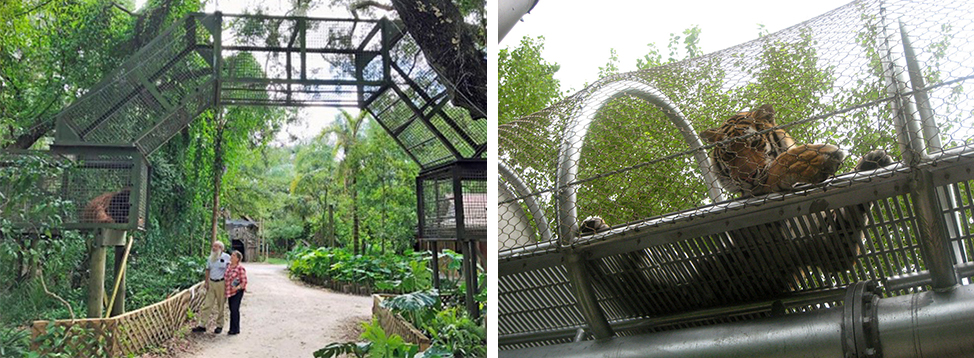Rotation/Alternation
Rotation/Alternation
Why should all animals in zoos, aquariums and sanctuaries spend their days and lives in the same limited areas? Like wild animals, why can’t they time-share adjoining areas with other species, thus greatly increasing behavioural and social opportunities? Why can’t they go for a “walk in the park” everyday if they want to?
The most recent step in exhibit design is the rotation exhibit (also called alternation or flex exhibits). Having various groups of animals transfer between different exhibit areas on a regular basis during the day can combine all the concepts of immersion design, themes, storylines and culture elements with activity-based training to add to the impact of zoo exhibits for both visitors and animals.
“Immersion exhibits have changed animal zoo exhibition using ‘nature’ as the model’ for international best practice, yet even the most diverse zoo habitats don’t provide animals occupations and animals soon become habituated with resulting decrease in animal activity and visual interest for the public. At Louisville’s (Kentucky USA) Islands Exhibits orangutan, tapir, babirusa, siamang and Sumatran tiger rotate through four habitat areas on a randomly determined schedule. Five years of behavioral observations show normal stress levels, increased activity and previously unseen natural behaviors.”
Abstract from “Mixed Species Rotation Exhibits” by Jon Coe for 2004 ARAZPA Annual Conference. This concept was developed by Jon Coe and Gary Lee at CLRdesign, inc.

Jon with founder Patti Ragan at her Center for Great Apes sanctuary in Wauchula, Florida. Tiger crossing at Philadelphia Zoo.
Jon’s Publications on Rotation/Alternation
Coe, Jon C., 1995. “Zoo Animal Rotation: New Opportunities from Home Range to Habitat Theater” in AZA Annual Proceedings 1995, Wheeling, WV, pp. 77-80. Abstract
Coe, Jon C., 2004. “Mixed Species Rotation Exhibits”, 2004 ARAZPA Conference Proceedings, Australia, on CD. Abstract
Coe, Jon, 2014 . “Next Generation Rotation Exhibits – Raceway Networks and Space to Explore ” Zoo and Aquarium Association Annual Conference, 25-28 March 2014, Auckland NZ